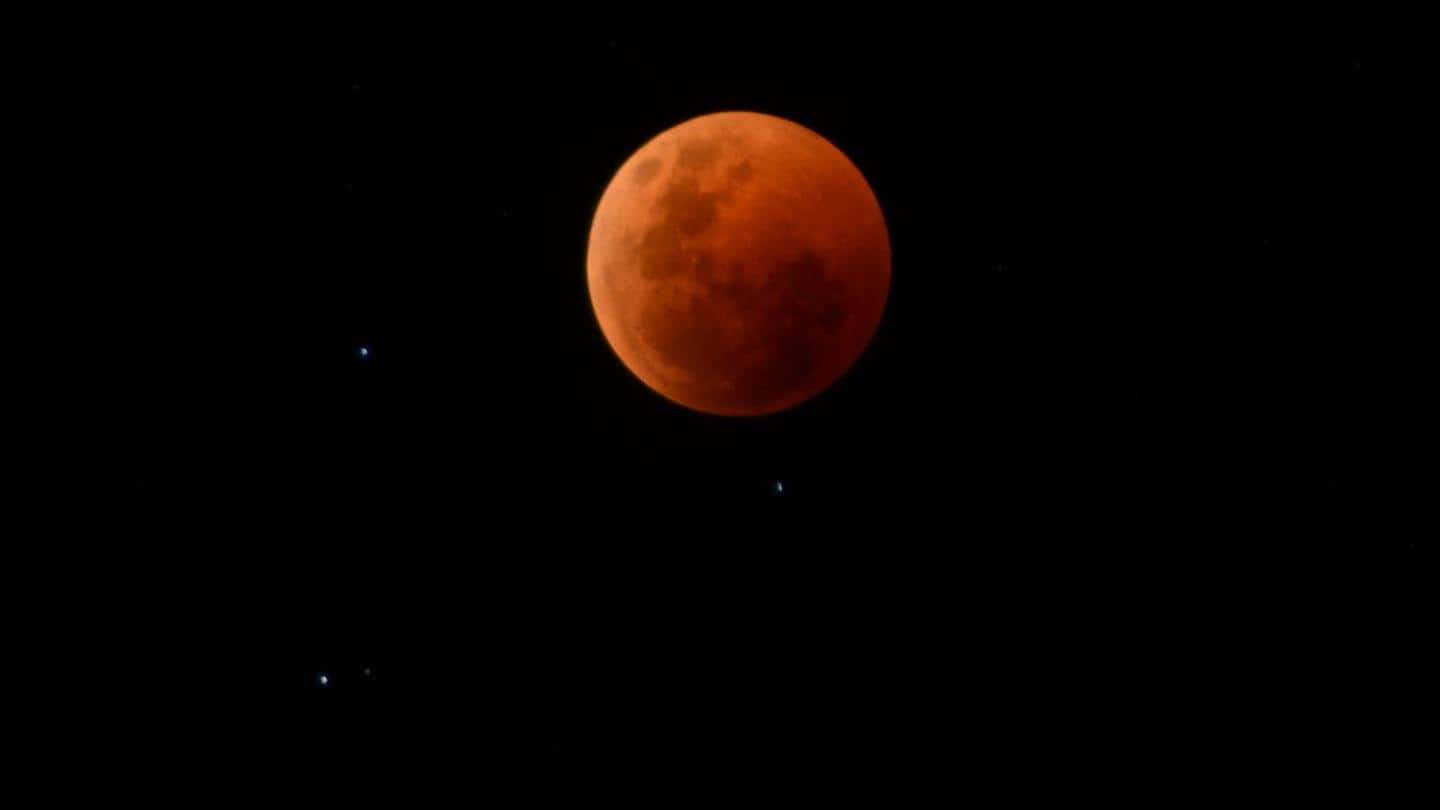
Super flower blood moon appears May 15: Know the details
What's the story
A spectacular super moon is due on May 15. All thanks to a lunar eclipse, this time we'll get to see a blood moon. According to NASA, the blood moon occurs when Earth is positioned directly between the Moon and the Sun, hiding the Moon from sunlight. During totality, the moon has a reddish glow. It also takes on orange, yellow, or brown hues.
#1
Total lunar eclipse
Earth's position between the Sun and the Moon casts a shadow of Earth on the Moon creating a lunar eclipse. The entire eclipse will be visible from certain locations, like the night part of Earth. Viewers may also get to see the Milky Way glowing during totality as the Full Moon's brightness is dimmed by Earth's shadow.
#2
Why is it called a supermoon and flower moon?
This month's full moon is also a supermoon because it'll appear larger and brighter than usual. It will be at its closest point to the Earth in its orbit, known as the perigee. It's also called the flower moon, one of the names given to May's full moon. May is predominantly spring and summer in the Northern Hemisphere, and flowers are in full bloom.
#3
How to watch
Unlike a solar eclipse, it's safe to look at a lunar eclipse with your naked eyes. If the weather is clear, people in North and South America, Europe, and Africa will be able to view the total lunar eclipse on May 15-16. Around 1 hour and 25 minutes of totality will be seen across the United States. However, it won't be visible in India.
#4
Why does the Moon turn red?
When Earth comes in between the Sun and the Moon, the eclipse occurs. A shadow is created on the far side when the Sun's light falls on the Earth. The Moon passes through this shadow during the eclipse. Earth's atmosphere is shrouded in reddish-orange light because of its position which reflects onto the Moon. This is why the Moon appears red.